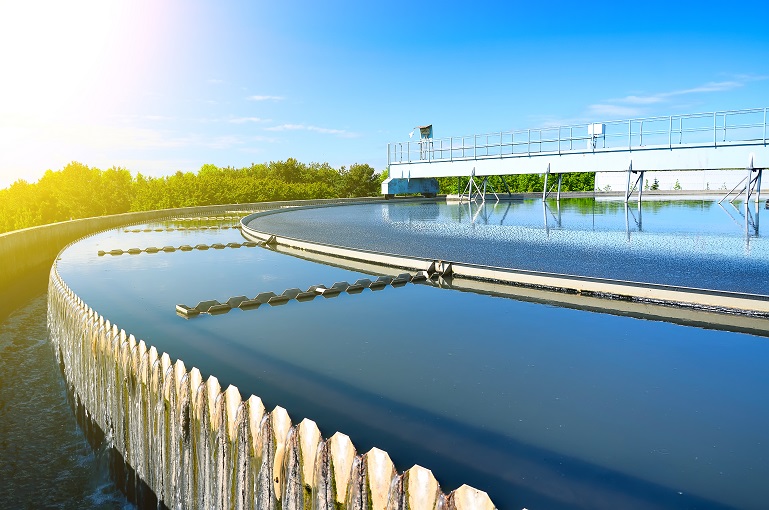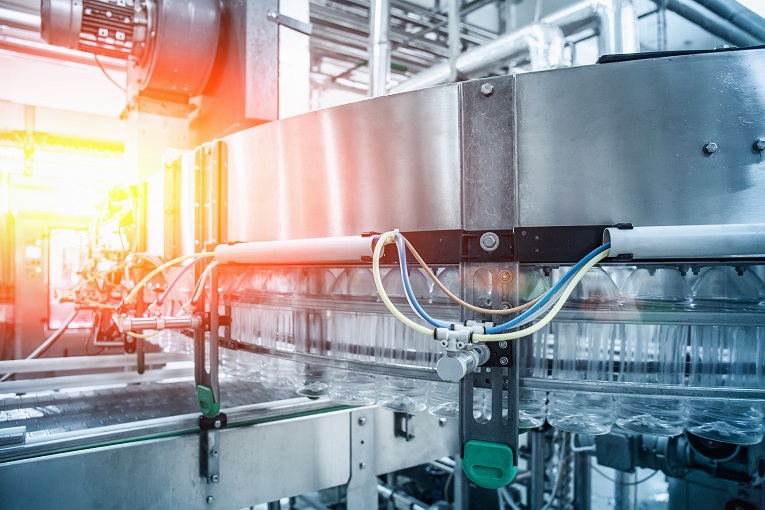

As the environment constantly changes, filtration and separation have a critical role in ensuring the world has an adequate supply of clean water. Here, we examine how nonwoven filtration media can help society better conserve, reuse and reclaim this precious resource.
With Covid-19 drawing consumer attention to pressing larger global environmental concerns that advanced filtration systems can help remedy, it is a pivotal time for the nonwovens industry to convene to discuss urgent issues it can play a part in solving.
Industry leaders will come together to address ways filtration and separation can help provide adequate clean water supply in a changing climate at FiltXPO, North America’s only exhibition and conference dedicated exclusively to the filtration and separation industry, 29-31 March, 2022 in Miami Beach.
Provding safe solutions “Water is essential to living,” says Mark Siebert, general manager, Healthcare and Specialities, US and Canada, Berry Global, Inc. “Filtered and reclaimed water is equally essential to saving this precious commodity and the environment. The nonwovens industry is critical in providing safe, cost-effective solutions to supplying safe and clean water for healthy consumption while conserving and reusing water as good stewards of our planet’s valuable resource.”
At FiltXPO, a panel of experts on clean water will explore such issues as contaminant control; advances in industrial process water treatment and reuse; and minimizing the energy required to purify water through desalination and water reclamation. Thought leaders speaking at the conference also will address indoor air quality, the impact of single-use plastics on the environment, filter standards and the pandemic’s effect on the industry. Below we present a preview of the key liquid filtration topics that will be tackled:
Nonwovens in filtration Nonwovens offer many versatile advantages in filter media over other materials. By removing contaminants and other finer particulates from fluids, nonwovens contribute to cleaner drinking water, food and beverages, pharmaceutical, medical, oil, fuel and other diverse applications.
With the megatrends of cleaner air and water, plus economic and population growth fueling strong demand, the nonwovens filtration market has continued its fast growth. Based on estimates by INDA, Association of the Nonwoven Fabrics Industry, sales to end-users of filtration products in North America were estimated at US$21 billion in 2019 and are forecast to rise 5.1% annually through 2024.
The consistent availability of water also is essential to nearly all manufacturing processes, making finding solutions to cost-effectively and efficiently treat storage water a top priority for the industry. “Every company involved in industrial manufacturing more than likely uses process water,” says Siebert, who will moderate the FiltXPO panel. “In general, you can’t operate a manufacturing process without using water in some form or fashion. In the absence of water, we can’t make product, so it is absolutely critical.”
The nonwovens industry uses large quantities of water in many of its processes such as hydroentanglement, which uses fine, high-pressure jets of water to produce its fabrics. “We spend a significant amount of attention on the overall amount of consumption, primarily because there’s a cost associated with it, but there’s also an environmental impact,” says Siebert of Berry Global. “We’re cognizant of both. We want to make certain that we’re first and foremost conserving the amount of water that we need to effectively run our process technology and that as we use water, we return it to the environment equal or better than we found it prior to our use.”
Contaminate control In addition to supply, water quality is a growing concern with population growth and increased industrial and agricultural activities. Filters made with nonwoven materials can help eliminate pollutants, undesirable chemicals and other contaminants from fluids, effectively helping to prevent the outbreak and spread of disease worldwide. Recent efforts have focused on wastewater treatment to prevent Legionella and Legionnaires’ disease.
“Contaminant control has always been a major issue in water and water safety,” says FiltXPO panelist Fred Lybrand, global marketing director for Process Liquids, Hollingsworth & Vose Company. “Some of the greatest inventions and greatest advances in human society have come from improving water quality and improved water control; for example, from the introduction of chlorine to the use of improved filtration to reduce waterborne pathogens.”
The global pandemic has brought questions about water safety to the forefront. According to the Water Environment Federation, experts believe that exposure to wastewater is not a significant transmission route for the Covid-19 virus. Municipalities and water producers employed innovative approaches to water testing during Covid-19 and confirmed that the established methods of virus control effectively controlled for the coronavirus, Lybrand said.
Microfiltration and membranes that were broadly adopted by the biopharmaceutical industry for the production of vaccines and other therapies have been proven at scale and now will be extended to other industries, such as food and beverage, industrial chemicals and water reuse, he predicts. “A lot of industries will benefit from the overflow out of biopharma,” he says. “The biopharmaceutical and therapeutics market really set the pace for the rest of the industry. There are very good economic tailwinds for all of those markets and we expect that to continue for the next two decades.”
Clean Energy The panel also will discuss the water/energy nexus or looking at ways to minimize overall energy consumption when treating water for reuse or reclamation. One of the key issues that will be addressed is the reliance on carbon dioxide generation to purify water. As FiltXPO panelist Hal Alper, president and chief science officer, MYCELX Technologies Corporation notes, “There is a catch 22. The current paradigm is clean water requires energy from coal-powered plants resulting in CO2 generation. We must develop low energy demand ways to purify water.”
According to Alper, the reliance on CO2 generating activities can be eliminated through an engineering process that exploits the self-assembling tendency of water to form a liquid crystal state at the air and water interface, also known as the Exclusion Zone (EZ) or a layer of water in which plastic microspheres are repelled from hydrophilic surfaces.
Alper says this super-organized liquid crystal state can exclude even protons from the disassociation of water. The EZ state self regenerates and excludes salts and particulate matter each time it is reformed, requiring only low-level sunlight. An area of research that merits attention in this field is the development of materials that can form the separation and reformation of the EZ.
“The holy grail of green energy has been to achieve disassociation of water using only sunlight as plants do,” he says. “All attempts have been unsuccessful due to chemists working with the wrong state of water. The water in plants is in capillaries and, therefore, in the liquid crystal EZ state, not in the bulk state that chemists work with. This may be a way for water purification technology to facilitate clean energy.”
Wastewater reuse Energy and cost considerations will remain paramount as wastewater reuse and brackish and seawater desalinations continue to grow, says Hervé Buisson, vice president, Veolia Water, who will also speak on the Clean Water panel at the conference.
Buisson sees a trend of first starting with the potential uses of the reused water and then developing adequate specifications for the treated water according to these uses to avoid the mistake of over-treatment. For example, irrigation is good at handling nitrogen (ammonia and nitrate, as well as some salts, depending on the crops) so reverse osmosis is an overkill for such applications.
He also sees a growing focus on micropollutants, including microplastics, and greater efforts to reduce energy and CO2 footprints. “Treating new pollutants requires more equipment and more energy,” Buisson says. “Innovators in wastewater treatment plants are facing growing challenges in trying to treat more pollutants to better standards while minimizing costs and energy.”
Climate Change The FiltXPO experts also will explore the impact of climate change, such as altered weather patterns including droughts or floods, that could cause water shortages. “Climate changes bring extra challenges to providing clean water supplies at all times,” says Buisson. “Extreme events like droughts and floodings need to be anticipated in developing overall water management plans at water basin levels but they bring their cohort of issues.”
Droughts, Buisson says, need special attention and will lead to the use of alternate water resources like brackish and sea waters, as well as reused wastewaters. Decentralized and local water conservation measures also will need to be implemented in the mix of solutions. On the other hand, flooding will lead to a push for the development of ‘smart assets,’ such as plants with advanced dynamic process control and some Artificial Intelligence (AI) to ensure more resilience to these events, Buisson says.
Buisson predicts more upstream collaborations between the industry and the water wastewater community. “Water will always be needed, and the development of a hydrogen economy is a good example to highlight that the demand for clean water will likely grow,” he says. “Industries are trying to reduce their water usage per ton of products, to boost reuse loops short and long, and to include water considerations from the start when developing their next-generation of production facilities. Filtration will remain a key part of water treatment, filters and filtration systems needed to meet the new requirements.”
Siebert reinforced the importance of the dialogue at this time. “Water scarcity is a concern, particularly in certain geographies on a global scale,” he says. “We need to make certain that we are appropriate and diligent stewards of this very precious resource because in the absence of availability, we will not be able to manage in our current state or meet growth targets. Effective use of water and water management are going to be critical issues that have to be addressed by the entire industry rather than just individual entities.”
FiltXPO will demonstrate the desire by the industry to partner more closely to solve industry issues. Rounding out the panel of experts will be Wu Chen, Ph.D. research scientist, Dow and Jim Lauria, Vice president of sales and marketing, Mazzei Injector Company, LLC.
Coming out of the pandemic, the nonwovens filtration industry will continue to respond with creativity and passion to the new challenges and this spirit of collaboration will be captured by FiltXPO attendees. For registration and other information, visit the FiltXPO site.




